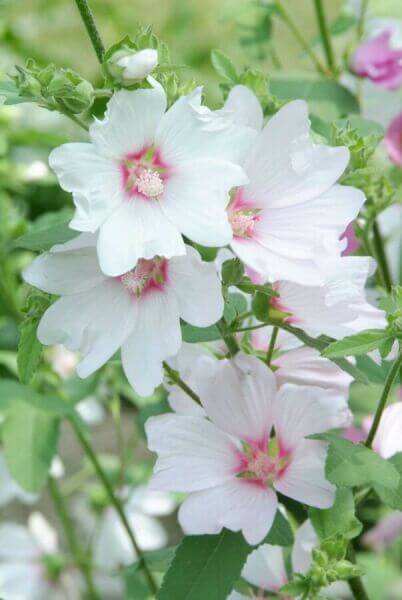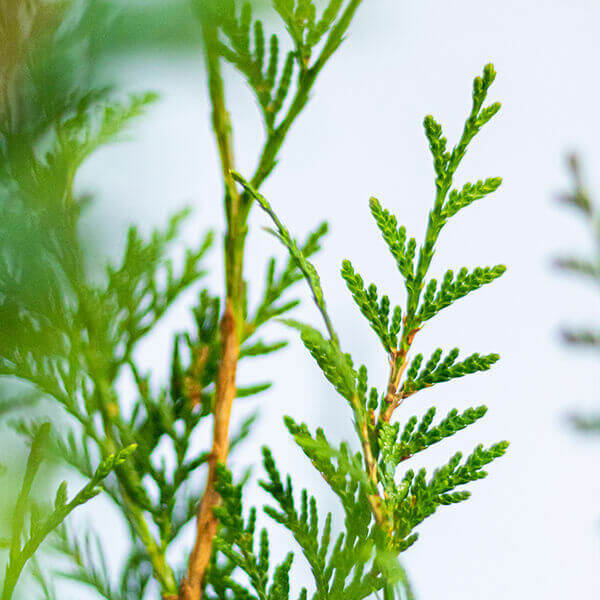Hedging Plants For All Year Interest
Hedging Plants For All Year Interest
Blog Article
Hedge Plants For Summer Blooms
Boost your garden's appeal with lavish hedge varieties such as Yew (Taxus), Thuja, Laurel, Photinia, and Bamboo, commemorated for their structural stability and environmental advantages.
Yew and Thuja supply evergreen coverage and winter season durability, while Laurel offers quick development and broad, fragrant leaves.
Photinia adds seasonal appeal with its vibrant red foliage, and Bamboo provides a low-maintenance, serene atmosphere.
These hedges improve air quality, lower sound, and create tranquil, personal spaces.
Appropriate planting, spacing, and upkeep ensure energetic growth and ecological consistency.
Explore how these rich ranges can elevate your garden's beauty and well-being.
Secret Takeaways
Transform Your Garden With Lush Hedge Varieties
- Select Yew for its thick, evergreen growth and exceptional durability.
- Choose Laurel for its quick growth and broad leaves, ensuring quick personal privacy.
- Pick Photinia for its vibrant seasonal foliage, which turns a striking dark red.
- Use Bamboo for a low-maintenance, winter-hardy hedge with visual appeal.
- Space plants 2-3 per meter and prune frequently for optimal growth and health.
Popular Hedge Plants
When transforming a garden with rich hedge ranges, it's necessary to consider popular hedge plants such as Yew, Thuja, Laurel, and Photinia due to their distinct attributes and benefits.
Yew (Taxus) is highly esteemed for its longevity and dense, green development, making it a prime option for sustaining landscapes.
Thuja is kept in mind for its evergreen foliage and robust winter season durability.
Photinia includes seasonal vibrancy with red leaves that darken with time, developing vibrant visual appeal.
Laurel uses quick development and aromatic, broad leaves, perfect for fast personal privacy.
In Addition, Bamboo is an exceptional option for atmosphere, providing a low-maintenance, winter-hardy choice that improves the garden's aesthetic with its elegant, swaying walking canes.
These choices accommodate a variety of horticultural needs and choices.
Advantages of Garden Hedges
Garden hedges use a plethora of benefits, making them an important addition to any landscape. These natural barriers are cost-effective to implement and supply considerable wind security, enhancing air blood circulation and adding to sound reduction. The dense foliage of hedges like Thuja and Beech guarantees privacy by obstructing visibility, creating a remote and serene environment.
Hedges likewise play an important role in microclimate guideline, offering a steady environment that promotes plant development and lessens temperature changes. Their intricate leaf structures filter contaminants, improving air quality and adding to a healthier garden environment.
Moreover, hedges stand out in noise decrease, absorbing and deflecting sound waves to lower ambient sound levels. This dual performance of supplying both visual and acoustic personal privacy enhances the general tranquility and aesthetic appeal of any garden.
Planting and Upkeep Tips
For a successful hedge, precise preparation of the planting location is crucial. Guarantee the soil has appropriate pH and drain to support strong root development.
Space the plants properly for the picked species. Water the hedge often throughout its preliminary growth phase, changing as needed with seasonal changes.
Implement a methodical bug control and disease prevention technique, utilizing chemical or organic treatments when needed. Frequently check for aphids, mites, and fungal infections.
Apply mulch to retain moisture and suppress weeds. Seasonal pruning promotes dense development and air blood circulation, necessary for plant health.
Following these guidelines will help you cultivate a vibrant, well-kept hedge that improves the appeal of your garden.
Spacing and Cutting Standards
Spacing and Cutting Standards
Correct spacing and cutting are vital for cultivating healthy, aesthetically appealing hedges. Appropriate spacing makes sure each plant gets enough nutrients, light, and air flow.
Follow these standards for ideal hedge maintenance:
- Spacing: Position hedge plants 2-3 plants per meter to encourage robust growth.
- Pruning Techniques: Regular pruning is essential for keeping wanted hedge height and shape. Cut brand-new development in summertime and cut back older wood during winter.
- Seasonal Care: Change cutting schedules and techniques according to seasonal requirements to guarantee plant health.
- Hedge Height: Frequently screen and trim to preserve the wanted hedge height and attain uniform aesthetic appeals.
Following these steps will guarantee your hedge prospers, boosting both the appeal and functionality of your garden.
Choosing the Right Hedge
Picking the Right Hedge
Choosing the suitable hedge involves evaluating elements such as mature height, foliage density, and environmental durability. Effective hedge plant selection requires understanding each species' development attributes and site-specific versatility.
For example, Yew (Taxus) uses exceptional Additional reading durability and dense development, while Thuja is noteworthy for its winter durability. Additionally, thinking about maintenance requirements is important; fast-growing species like Laurel or Privet need regular cutting, whereas low-maintenance choices like Bamboo or Ivy may be preferable for those looking for minimal maintenance.
Environmental aspects such as soil type, light accessibility, and moisture conditions must also direct the selection procedure. This mindful approach makes sure the chosen hedges will prosper, providing both practical and aesthetic benefits to the garden landscape.
Shipment and Planting Recommendations
To guarantee your hedge plants flourish, they need to be delivered by specialized couriers and planted immediately upon arrival.
Follow these necessary steps for successful planting:
- Soil Preparation: Enhance the soil with raw material to enhance drainage and nutrient material.
- Planting Depth: Develop a trench twice the width and equal to the depth of the root ball.
- Watering Methods: Water completely after planting, keeping the soil regularly wet but not saturated.
- Mulching: Apply a layer of mulch to maintain wetness and suppress weeds.
Client Assistance and Service
Offered the crucial function of timely support in horticultural pursuits, our consumer assistance group is available six days a week through telephone, email, and social media to offer professional guidance and quickly attend to any issues. Their commitment to quick response times ensures customer complete satisfaction by fixing inquiries associated with plant health, ideal planting techniques, and maintenance schedules.

Email
Six days a week
This detailed assistance system, reinforced by a stellar 9.3/ 10 customer score, highlights our commitment to improving the gardening experience for each customer.
Regularly Asked Concerns
The Length Of Time Does It Consider Hedge Plants to Develop?
Hedge plants generally require one to 3 years to become completely established, with the precise duration varying by species and growing conditions.
Effective care during this critical duration is necessary for robust development. Constant watering, watchful weed control, and suitable fertilizer application are critical in promoting strong root development.
For example, fast-growing species like Laurel might develop faster, while slower-growing ranges such as Yew may take longer. Persistent maintenance accelerates the facility procedure, resulting in dense and healthy hedges.
What Are the very best Hedge Plants for Personal Privacy?
The question of the very best hedge plants for personal privacy includes examining evergreen and deciduous choices.
Evergreen hedges like Thuja, Laurel, and Cypress offer year-round coverage, making sure constant privacy.
In contrast, deciduous hedges such as Beech offer seasonal privacy, shedding leaves in cooler months.
Secret maintenance tips for personal privacy hedges consist of regular cutting, fertilizing in spring, and appropriate spacing-- generally 2 to 3 plants per meter.
In addition, constant watering and diligent weed elimination are important for promoting healthy, dense development.
Can Hedge Plants Attract Wildlife to My Garden?
Yes, hedge plants can bring in wildlife to your garden by offering essential advantages like shelter, food, and nesting sites, therefore improving local biodiversity. For example, yew, holly, and laurel are excellent for bring in birds, while ivy supports a variety of pests.
However, it is very important to note that there are some downsides, such as increased maintenance to handle bugs and regular maintenance. Carefully choosing and keeping hedge varieties can assist balance these benefits and downsides, eventually fostering a sustainable and dynamic environment in your garden.
Are There Any Flowering Hedge Plants Available?
Yes, there are flowering hedge plants readily available that can enhance the charm of your garden.
For instance, Elaeagnus, likewise referred to as Olive Willow, produces fragrant white flowers in the fall, including a touch of sophistication.
Photinia, another popular choice, showcases vibrant red leaves that develop into an abundant green, developing a dynamic visual effect throughout the seasons.
To guarantee these plants grow, it's necessary to practice proper pruning methods and seasonal upkeep, such as cutting brand-new development in the summer season and cutting back in the winter.
These steps will help preserve the health and visual appeal of your blooming hedges.
How Do I Avoid Insects in My Hedge Plants?
To avoid bugs in hedge plants, use natural bug control approaches and keep correct hedge care. Present helpful pests like ladybugs, which victimize damaging bugs, to develop a well balanced environment.
Frequently check your hedges for indications of invasion and immediately get rid of any afflicted parts to avoid the spread. Guarantee the health of your hedges by applying balanced fertilizers and providing adequate water.
Make use of mulching to maintain soil wetness and appropriate spacing to lower plant stress and promote robust growth. These practices jointly assist in lessening insect issues and maintaining a healthy hedge.
Conclusion
In essence, picking the best hedge varieties such as Yew, Thuja, and Laurel can change any garden into a serene sanctuary. These plants provide year-round plant, boost visual appeal, and deal useful benefits like sound decrease and wind protection.
Appropriate planting strategies, accurate spacing, consistent watering, and seasonal trimming are crucial for optimum growth.
Trusted delivery services and professional client support ensure a seamless experience from purchase to planting, making it simpler than ever to elevate your outside area.
Garden hedges use a wide range of advantages, making them an important addition to any landscape. These natural barriers are cost-efficient to carry out and provide significant wind security, improving air flow and contributing to sound decrease. The thick foliage of hedges like Thuja and Beech guarantees personal privacy by blocking visibility, producing a serene and remote environment.

Pruning Strategies: Routine pruning is important for maintaining wanted hedge height and shape. Cut new growth in summer and cut back older wood throughout winter season.
Report this page